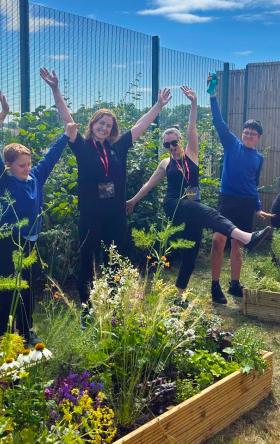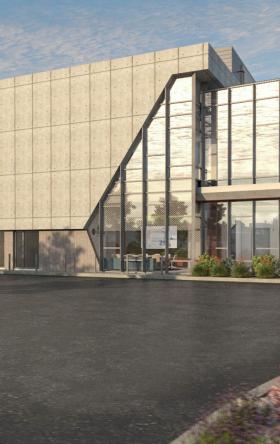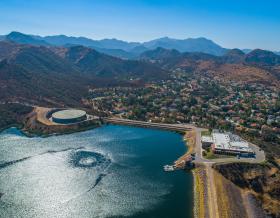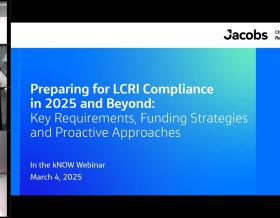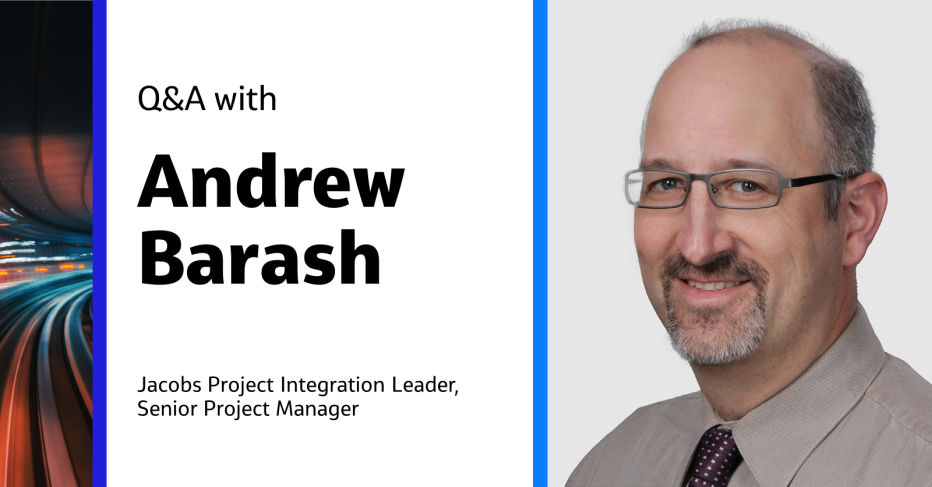
Public transportation systems, valued as some of the most equitable and sustainable modes of transportation, connect communities and help stimulate economic development.
Expanding these complex systems and adding more advanced solutions, such as high-speed rail, to meet public demand can be an intricate, high-intensity ride. Whether the journey includes keeping pace with capacity building and accelerating technology innovations, ensuring safety and security or maintaining transport networks, Jacobs is on board to serve all aspects of high‐speed and conventional passenger rail, freight and logistics, mass/public transit and innovative bus solutions.
We’re a globally recognized leader in the safe and efficient delivery of rail and transit solutions – from planning, design and development to delivery and management.
In this Q&A, we connect with one of our global teammates, project integration leader, Andrew Barash, to discuss trends and technology shaping transportation of tomorrow.
Tell us a bit about your background and how it shapes your approach.
I’m a civil engineer and project manager with more than 20 years of experience. For most of my career, I’ve worked on projects that feature a prominent urban design focus and are intended for a wide range and large number of users. This background provides for an approach that expands the traditional scope of civil engineering to create improvements that serve and balance the needs of all users.
How do you help clients think differently to respond to future challenges?
Clients succeed when they develop projects that meet the current and future needs of their community. Helping clients understand trends – such as growth, travel and lifestyle preferences – help to shape project goals and objectives that result in improvements built to serve the community and accommodate change. Information to help clients understand trends can be obtained through data collection, public outreach and leveraging industry knowledge of best practices used around the world.
With more than one million people expected to call Seattle home by 2044, what’s a trend you’re seeing in the Seattle area lately?
Many people moving to Seattle want to live near services and recreation and in areas with options for transportation. Many younger people don't want the trouble or expense of owning a car and would prefer to live where they can walk, bike, or use transit for mobility.
Unlike many cities, Seattle is mostly land-locked by water. This will result in increased housing density, and limited space for new/wider roadways or parking. As a result, more accessible transit, walking and biking options is critical to accommodate the added population.
How do you see data solutions changing how we deliver transportation solutions going forward?
Data can be used to help clarify project objectives and support the need for walkable and accessible spaces. In many cases, the standard approach is to have streets that prioritize motorized vehicles. However, data can be used to counter that standard approach, and show that wider sidewalks, protected bike lanes or transit accommodations are needed. Data can demonstrate that a more shared, or balanced use of the street is warranted. For example, instead of adding traffic lanes, protected bike lanes, wider sidewalks, or enhanced transit may better serve the community.
Also, data can show where people are moving to/from and help to guide future investments in walkable and accessible spaces that provide optimal community benefit.
What are some lessons learned from your experience with urban design?
Having worked with some excellent urban designers, I’ve learned to draw from their expertise on how people will experience a space or facility and understand factors that contribute to making those improvements comfortable and inviting. The most successful projects integrate urban design and engineering from the outset – adding urban design late in development may be too late to address previous design decisions that may be sound engineering practice, but less than ideal for how people will experience or use it.
Is there a project you're particularly proud of?
I’m proud of the Overlook Walk project, which is a marquee project within the Seattle Waterfront Program. My role on this project was technical design lead and project manager during design – from concept through construction.
The Overlook Walk is a large, pedestrian land bridge that crosses over a roadway, and connects between two of Seattle’s top tourist attractions – Pike Place Market and the Seattle Aquarium/Waterfront. There is nearly 100 feet of elevation between the Pike Place Market and the Waterfront, and numerous constraints/conditions to accommodate. There had been dozens of plans proposed over the years to allow people to comfortably navigate the change in elevation. Working closely with our urban designer, we developed a plan that included a combination of accessible ramps, stairs and elevators, a café space, glass canopy, benches, landscaped planters and lighting to provide a comfortable and inviting connection between the Pike Place Market and Waterfront.
About the interviewee

A civil engineer by training, Andrew Barash brings 24 years of experience as a project manager and design lead, including 14 years as the Technical Design lead and Program Manager for Seattle Waterfront Program, and multiple design roles on local projects such as SR 519 Intermodal Access Design-Build project. As an engineer/planner, his focus is not only on how projects and disciplines are integrated within a larger program, but how that work interfaces with adjacent projects and the existing built environment.
Starting in 2010, Andrew oversaw the design of six different projects valued from $5 million to $200 million for the Seattle Waterfront Program —first as Design Lead and then as Program Manager. Andrew oversaw the work of large, multidisciplinary teams to ensure high quality delivery of each of these projects through design and into construction.
